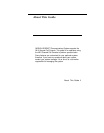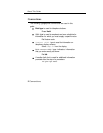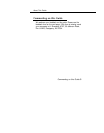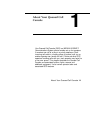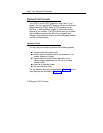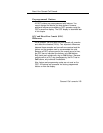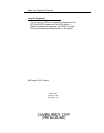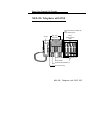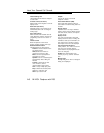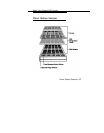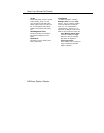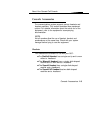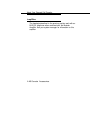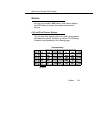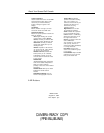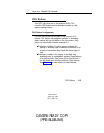
About
Your Queued Call Console
Button Iabeling card
Card labeled with the features assigned
to each button.
Contrast control (not shown)
Sliding switch used to brighten or dim the
display screen.
Desk stand (not shown)
Adjustable stand on the console and on
the DSS that allows a 20- or 30-degree
viewing angle.
User cards and tray
Slide-out drawer with erasable cards for
noting telephone numbers. (Feature and
programming codes are not used on a
QCC.)
Volume Control
Button to adjust the volume of the
speaker, handset, headset, and ringer.
Dedicated features buttons
Imprinted buttons for these features:
Feature to view the Feature screen
and select features.
HFAI (Hands Free Answer on
Intercom) not used on a QCC.
Mute to turn the speakerphone’s
microphone on and off.
Speaker to talk on a call (through the
speakerphone) without lifting the
handset.
Transfer to direct calls to other
users. However, Start is
recommended for this function.
Conf to setup multiple-party calls.
Drop to disconnect the last person
added to a conference calf.
Hold to put a call on hold.
Dialpad
Area on the console used to dial
telephone numbers.
Direct Station SeIector (DSS)
Device that adds extension buttons or
other inside and outside calling buttons to
the QCC.
Display buttons
Imprinted button and eight unlabeled
buttons used to view the different screens
and select names, features, and options
on each screen.
Display screen
The 7-line by 24-character screen that
displays the Home screen, including call
information, QCC queue information, the
date, and the time. The Menu, Feature,
and Inspect screens are also displayed.
Call and fixed features buttons
Twenty buttons, to to make and receive
calls and 15 for activating features.
(These buttons are preprogrammed and
cannot be changed.)
Handset The hand-held part of the
console you pick up, talk into. and listen
from.
Message Light
Red light that goes on when a message is
waiting to be displayed.
1-6
MLX-2OL Telephone with DSS



